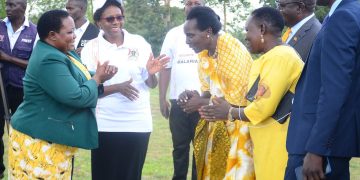Authorities in Nakasongola District are celebrating significant progress in their immunisation efforts, following the transformative impact of the Saving Lives and Livelihoods project(SLL), implemented by the Health Ministry with support from the Africa CDC and Amref Helath Africa-Uganda with funding from MasterCard Foundation.
Previously ranked in the lowest performance bracket (Category Four) and colour-coded Red due to severe resource and capacity constraints, Nakasongola District has risen to Category Three status within just two months of the project’s intervention.
This positive shift marks a major milestone in the district’s healthcare transformation.
The second phase of the Saving Lives and Livelihoods initiative, which began in March 2025, is focused on enhancing vaccination service delivery, strengthening routine immunisation systems, and revitalising existing healthcare structures.
The project aims to strengthen the Expanded Programme on Immunisation (EPI) across all age groups not just children under five, but also adolescents, adults, and the elderly ensuring a life-course approach to immunisation.
District health officials have credited the project with turning around previously dire immunisation efforts, which had been hampered by logistical challenges, limited outreach, inadequate staffing, and resistance to vaccination within communities.
Dr. Byamukama Agaba, Nakasongola District Health Officer, recalled the state of the district before Amref’s intervention.
“Before Amref came, Nakasongola was performing poorly in immunisation. We were in Category Four, the lowest level,” he said. “Amref came in as a partner and engaged stakeholders to identify the major challenges, and it was clear that capacity building at all levels was the key issue.”
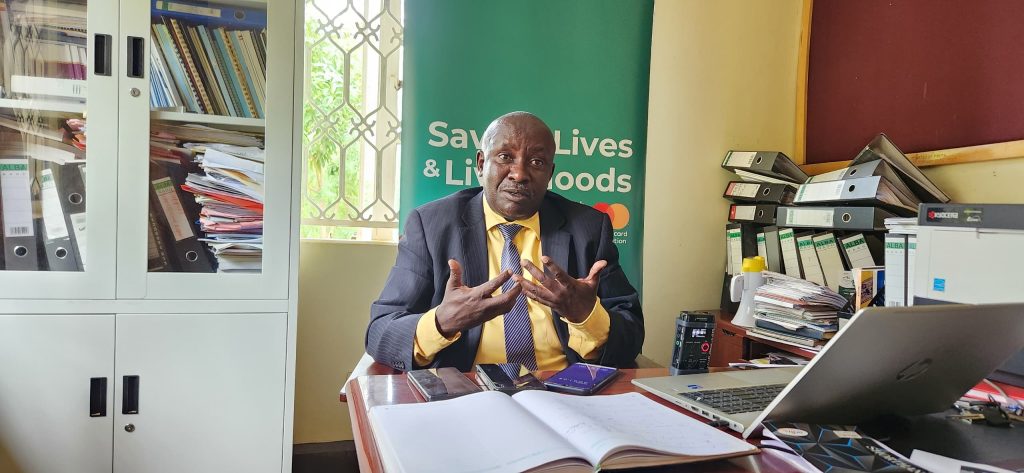
He explained that prior to the project, vaccination coverage stood at the following levels: Yellow Fever at 19%, Measles-Rubella first dose (MR1) at 99%, Measles-Rubella second dose (MR2) at 47%, Diphtheria first and third doses both at 80%, Pneumococcal Conjugate Vaccine (PCV) first dose at 74% and third dose at 81%, and Rotavirus first and third doses at 75% and 73%, respectively.
Following the intervention by Amref, there has been notable progress. Yellow Fever coverage has more than doubled, rising from 19% to 40%. MR1 coverage has remained stable at 99%, while MR2 has improved significantly, increasing from 47% to 60%. “These improvements are already a clear indication that the interventions are having a positive impact,” Dr. Byamukama noted.
Through stakeholder engagements, Amref identified gaps at various levels including Village Health Teams (VHTs), community mobilisers, frontline health workers, data managers, and district leadership. Capacity-building initiatives were then rolled out across these groups.
Dr. Byamukama highlighted that Amref began by training VHTs, health workers, local leaders, and politicians to better understand and manage immunisation delivery.
With community resistance initially high, sensitisation campaigns such as radio talk shows and community dialogues were launched to shift perceptions and build trust in immunisation.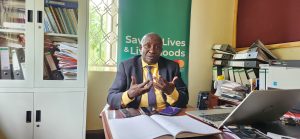
“After the training, we engaged directly with communities to understand their concerns,” he added. “Common issues included health workers not keeping time, vaccine shortages, and an inadequate number of staff during immunisation exercises.”
Amref addressed these concerns by deploying additional healthcare staff and assuming responsibility for vaccine distribution from the district level down to individual health facilities.
Monthly supportive supervision and consistent monitoring were introduced, replacing the previous quarterly system.
“With Amref’s support, we now have regular supervision involving technical officers, political leaders, and the CAO’s office, ensuring that services are delivered effectively and that communities are actively receiving care,” Dr. Byamukama explained.
The number of health workers participating in outreach activities significantly increased. While the government previously funded only one health worker and one mobiliser, Amref now facilitates five health workers and six mobilisers per outreach, greatly expanding coverage.
Florence Kyakuwaire, the district’s Senior Nursing Officer, applauded the project’s impact.
“We’ve moved from Category Four to Category Three in just a few months, which is a step forward. But it’s not enough, we must keep mobilising people to bring their children for immunisation.”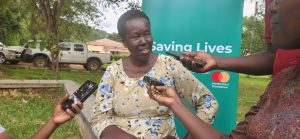
She noted that integrated community outreaches, supported by Amref and initiated by the Ministry of Health, have been essential. Through these sessions, health workers educate communities about the importance of immunisation before administering vaccines.
“Amref supported all 38 EPI health facilities in the district with outreach activities during Integrated Child Health Days. We start by educating the public on the value of immunisation,” she added.
Dr. Sseruyange, the Data Quality Assessment Officer, reported that Amref’s intervention has significantly improved data collection and reporting.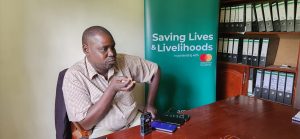
Data management and reporting had previously been a challenge due to limited capacity among staff. Amref addressed this by building the capacity of data collectors and introducing streamlined reporting tools.
Patrick Ssentonyi, the Deputy RDC of Nakasongola, hailed Amref for its role in supporting malaria vaccination and broader immunisation efforts:
“Through outreach programs and by increasing the number of health workers and VHTs, Amref has helped move the district forward. We’re seeing real progress.”
However, he also pointed to some challenges, particularly with misinformation spread by certain religious leaders.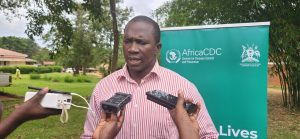
“We are working to reach out to these leaders and clarify the facts about immunisation to ensure no one is left behind,” he noted.
The Saving Lives and Livelihoods Phase Two is a one-year initiative funded by the Mastercard Foundation and implemented in eight districts: Nakasongola, Mubende, Kassanda, Nakaseke, Mityana, Kyankwanzi, and Luwero.
The project aims to achieve three primary objectives: enhancing vaccination service delivery, developing policies and tools to support life-course immunisation, and building the capacity of health workers.
With continued support from the Ministry of Health and Amref Health Africa, Nakasongola’s health sector is not only recovering but steadily advancing ensuring that more people across all age groups receive life-saving vaccines.



